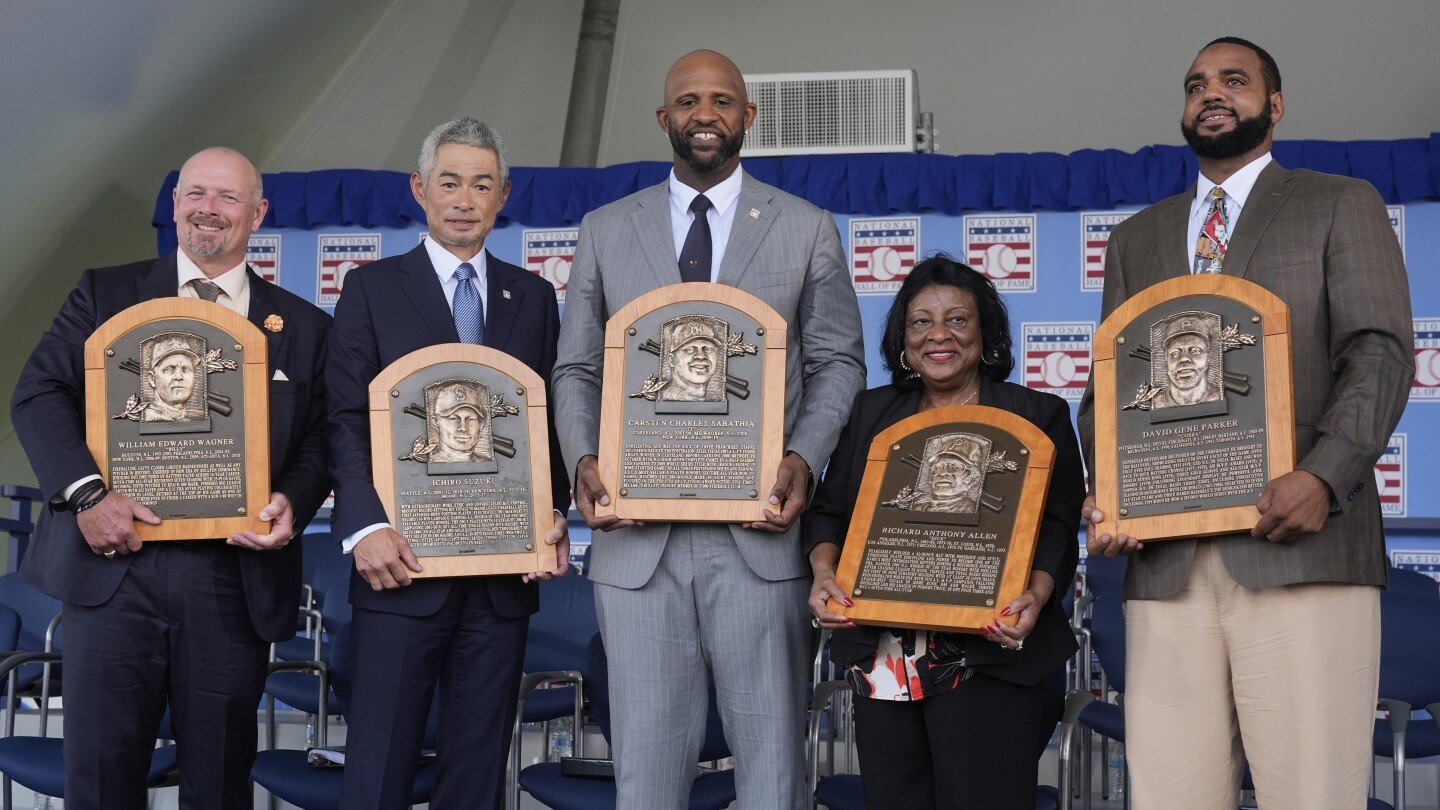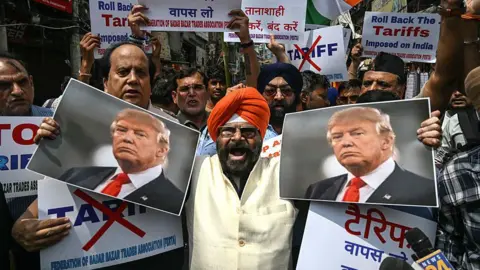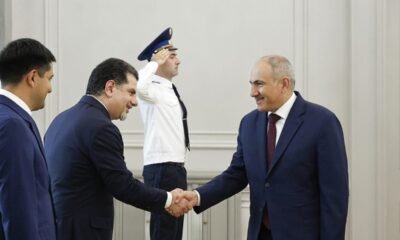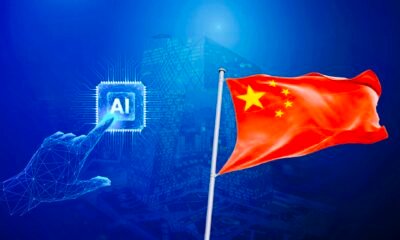Top Stories
Ichiro Suzuki adds humorous touches to Hall of Fame induction ceremonies

COOPERSTOWN, N.Y. (AP) — If you want someone for your next celebrity roast, Ichiro Suzuki could be your guy.
Mixing sneaky humor with heartfelt messages, the first Japanese-born player to be inducted into the Baseball Hall of Fame stole the show Sunday in Cooperstown.
Morning showers and gloomy skies delayed the ceremonies by an hour, but the moisture gave way to bright skies and warm temperatures. The sun seemed its brightest during Suzuki’s acceptance speech.
The outfielder was joined by pitcher CC Sabathia, also elected in his first year of eligibility, and closer Billy Wagner, who made it in his final try on the writers’ ballot. Suzuki fell one vote shy of being a unanimous selection and he took a jab at the unidentified sports writer who didn’t vote for him.
“Three thousand hits or 262 hits in one season are two achievements recognized by the writers. Well, all but one,” Suzuki said to roaring laughter.
“By the way, the offer for the writer to have dinner at my home has now expired,” he added, with emphasis on “expired” for good measure.
A pair of Era Committee selections rounded out the Class of 2025: Dave Parker, who earned the nickname Cobra during 20 big league seasons, and slugger Dick Allen. Parker died June 28, just a month before he was to be inducted.
An estimated 30,000 fans crowded onto the field adjacent to the Clark Sports Center, sun umbrellas and Japanese flags sprinkled around. Suzuki’s No. 51 was seemingly everywhere as fans, thousands of them Seattle Mariners boosters who made the trek from the Pacific Northwest, chanted “Ichiro” several times throughout the day. A sign that read “Thank You Ichiro! Forever a Legend” in English and Japanese summed up the admiration for Suzuki on his special day.
With 52 returning Hall of Famers on hand, Suzuki paid homage to his new baseball home in Cooperstown and his adoring fans by delivering his 18-minute speech in English. His humor, a surprise to many, delighted the crowd.
He threw shade at the Miami Marlins, the last stop of his professional career.
“Honestly, when you guys offered me a contract in 2015, I had never heard of your team,” Suzuki joked.
He kidded that he showed up at spring training every year with his arm “already in shape” just to hear Mariners broadcaster Rick Rizzs scream, “`Holy smokes! Another laser-beam throw from Ichiro!’”
He even took a moment for some tongue-in-cheek modesty.
“People often measure me by my records. Three thousand hits. Ten Gold Gloves. Ten seasons of 200 hits.
“Not bad, huh?” Suzuki said to more laughs.
He thanked his late agent Tony Anastasio for “getting me to America and for teaching me to love wine.”
But he also took time to get to the root of what made him extraordinary.
“Baseball is much more than just hitting, throwing and running. Baseball taught me to make valued decisions about what is important. It helped shape my view of life and the world. … The older I got, I realized the only way I could get to play the game I loved to the age of 45 at the highest level was to dedicate myself to it completely,” he said. “When fans use their precious time to see you play, you have a responsibility to perform for them whether you are winning by 10 or losing by 10.
“Baseball taught me what it means to be a professional and I believe that is the main reason I am here today. I could not have achieved the numbers without paying attention to the small details every single day consistently for all 19 seasons.”
Now he’s reached the pinnacle, overcoming doubters, one of whom said to him: “`Don’t embarrass the nation.’” He’s made his homeland proud.
“Going into America’s Baseball Hall of Fame was never my goal. I didn’t even know there was one. I visited Cooperstown for the first time in 2001, but being here today sure feels like a fantastic dream.”
Sabathia thanked “the great players sitting behind me, even Ichiro, who stole my Rookie of the Year award (in 2001).” He paid homage to Parker and spoke about Black culture in today’s game.
“It’s an extra honor to be a part of Dave’s Hall of Fame class. He was a father figure for a generation of Black stars. In the ’80s and early ‘90s when I first started watching baseball and Dave Parker was crushing homers, the number of Black players in the major leagues was at its highest, about 18%. Me and my friends played the game because we saw those guys on TV and there was always somebody who looked like me in a baseball uniform.
“Baseball has always been a great game for Black athletes, but baseball culture has not always been great to Black people. I hope we’re starting to turn that around. I don’t want to be the final member of the Black aces, a Black pitcher to win 20 games. And I don’t want to be the final Black pitcher giving a Hall of Fame speech.”
Wagner urged young players to treat obstacles not as “roadblocks, but steppingstones.”
“I wasn’t the biggest player. I wasn’t supposed to be here. There were only seven full-time relievers in the Hall of Fame. Now, there are eight because I refused to give up or give in,” he said.
Suzuki received 393 of 394 votes (99.7%) from the Baseball Writers’ Association of America. Sabathia was picked on 342 ballots (86.8%) and Wagner on 325 (82.5%), which was 29 votes more than the 296 needed for the required 75%.
After arriving in the majors in 2001, Suzuki joined Fred Lynn (1975) as the only players to win Rookie of the Year and MVP in the same season.
Suzuki was a two-time AL batting champion and 10-time All-Star and Gold Glove winner, hitting .311 with 117 homers, 780 RBIs and 509 stolen bases with Seattle, the New York Yankees and Miami.
He is perhaps the best contact hitter ever, with 1,278 hits in Nippon Professional Baseball and 3,089 in MLB, including a season-record 262 in 2004. His combined total of 4,367 exceeds Pete Rose’s major league record of 4,256.
Sabathia, second to Suzuki in 2001 AL Rookie of the Year voting, was a six-time All-Star who won the 2007 AL Cy Young Award and a World Series title in 2009. He went 251-161 with a 3.74 ERA and 3,093 strikeouts, third among left-handers behind Randy Johnson and Steve Carlton, during 19 seasons with Cleveland, Milwaukee and the New York Yankees.
A seven-time All-Star, Wagner was 47-40 with a 2.31 ERA and 422 saves for Houston, Philadelphia, the New York Mets, Boston and Atlanta.
Tom Hamilton and Tom Boswell were also honored during Hall of Fame weekend. Hamilton has been the primary radio broadcaster for the Cleveland Guardians franchise for 35 seasons and received the Ford C. Frick Award. Boswell, a retired sports columnist who spent his entire career with The Washington Post, was honored with the BBWAA Career Excellence Award.
___
AP MLB: https://apnews.com/hub/mlb
Top Stories
Craig Jones puts Chael Sonnen to sleep twice in CJI 2 superfight

Chael Sonnen stepped in as a late replacement for Gable Steveson at Sunday night’s Craig Jones Invitational 2 in Las Vegas and did his best to survive against Craig Jones.
In a match scheduled for three five-minute rounds, Sonnen managed to get tapped twice with the same move.
A former UFC middleweight and light heavyweight title challenger, Sonnen immediately took Jones to the ground to find himself locked in a buggy choke. The choke was tight, and Sonnen apparently went to sleep.
Sonnen regained his senses, and both athletes agreed to go at it again. Sonnen took Jones down again, going for a leg lock with no real danger to a grappler of Jones’ caliber. The CJI founder against attacked with the buggy choke, again having Sonnen go lights out.
McCarthy couldn’t help but laugh as Sonnen tried to make it best three out of five — and the crowd chanted to get the two go at it again —, but the referee called the end of the contest.
The official result was read as Jones being victorious via double buggy choke.
Watch the second finish below.
Top Stories
Liverpool agrees to British-record deal for Alexander Isak, sources say

Liverpool have agreed to a British-record deal to sign striker Alexander Isak from Newcastle United, sources told ESPN.
The Premier League champions have had a £125M bid accepted to sign the Sweden international, who is expected to undergo a medical ahead of Monday’s transfer deadline.
It brings an end to one of the summer’s most-protracted transfer sagas, with Isak having spent more than a month agitating for a move away from Newcastle. The 25-year-old did not join the club on their preseason tour of the Far East and has not featured for Eddie Howe’s side this season.
He also released a sensational statement earlier this month in which he claimed promises had been “broken” by the Newcastle hierarchy and insisted a move this summer would be in the best interests of all parties.
Isak is now set to become the most expensive signing in Premier League history, surpassing Chelsea’s Moisés Caicedo who joined the London club for £115M from Brighton & Hove Albion in the summer of 2023. It marks the second time this summer that Liverpool have broken their transfer record, with Arne Slot’s side having committed spending an initial £100M (plus a potential £16M in add-ons) to sign Florian Wirtz from Bayer Leverkusen in June.
Top Stories
Donald Trump as the wildcard and other takeaways for India-China relationship

Vikas PandeyIndia editor and
Stephen McdonellChina correspondent
 Reuters
ReutersThe view from India
Just a few months ago, the armed forces of India and Pakistan were locked in a brief but deadly conflict.
The conflict indirectly involved a third nation – China. Pakistan’s armed forces heavily used China-made equipment, including fighter jets and radar systems.
A senior army officer in Delhi said Beijing also provided “live inputs” to Pakistan on Indian positions.
India didn’t take a public stand against China, but this left many asking if Delhi should continue on the path of normalising relations with Beijing.
Less than six months later, peace talks between the two Asian giants have been turbocharged by decisions taken thousands of miles away in Washington DC.
The Trump administration has imposed 50% tariffs on Indian imports, saying Delhi was being punished for its refusal to stop buying oil from Russia.
Delhi had two clear choices after this stunning onslaught from a trusted ally.
The first was to cave in and stop buying Russian oil. But it has refused to do so, largely because Russia is an “all-weather” ally and giving into pressure doesn’t suit Indian Prime Minister Narendra Modi’s strongman image.
The second was to stand firm and seek other opportunities and India appears to have to chosen this option for now.
It’s also pragmatic to look no further when your neighbour is the world’s second-largest economy and a global manufacturing powerhouse.
It was in this context, that Modi met Chinese President Xi Jinping in Tianjin over the weekend.
Statements from the two sides were not heavy on details, though they promised to work through their differences to benefit their collective population of 2.8 billion people.
The immediate takeaway from the meeting was the resumption of direct flights between the two countries and making the process of issuing visas simpler.
But beyond the promise of “the elephant and the dragon” coming together, the two countries still have major roadblocks to clear before they are able to engage meaningfully.
Their first challenge comes from their immediate history.
Modi has invested personally in the India-China relationship since coming to power in 2014, visiting the neighbouring country five times until 2018.
But the 2020 border clash put brakes on this momentum and it has taken seven long years for Modi to visit China again.
The key to making further progress will depend on how the two countries deal with their border issues.
Tens of thousands of troops from both countries are still deployed at their contested borders – though there are ongoing talks between their civilian and military leaders to ease the situation.
 AFP via Getty Images
AFP via Getty ImagesBoth Chinese and Indian readouts after the meeting this weekend talked about maintaining peace at the border and “not turning their differences into disputes”.
For India, there is the issue of a burgeoning trade deficit with China, amounting to more than $99bn (£73bn).
Both countries still have high tariffs and duties against each other in many sectors.
Beijing would want India to open its market of 1.4 billion people to Chinese products, but Delhi would be wary of doing that without addressing the deficit.
The outreach to China, which started with Modi meeting Xi in Kazan last year, may have been supercharged by Trump tariffs, but ground realities for India remain unchanged.
The Modi-Xi meeting is being seen as part of India’s policy of “strategic autonomy” but it will also cause more geopolitical challenges for Delhi.
India is due to host the Quad (which includes Japan, Australia and the US) summit later this year. The forum was largely seen as a challenge to China’s dominance in the Indo-Pacific region.
It’s not clear if Trump will attend, but if he does and says something against China, it will immediately test the renewed synergy between Delhi and Beijing.
Delhi is also part of several other multilateral forums that are perceived as anti-China and anti-Russia.
How Delhi plays its strategic autonomy in the next few months will very much influence the direction India-China ties take.
For now, it’s clear that India-US ties are at an all-time low. A Trump aide recently called the Russia-Ukraine conflict “Modi’s war”.
Delhi has also consistently denied that Trump played any role in the ceasefire between India and Pakistan in May – this has become a constant irritant for the US president.
Despite this, India has refrained from imposing retaliatory tariffs against the US and has left the door ajar for further negotiations. After all, the US is India’s biggest trading partner.
Will going closer to China help India’s negotiations with the US or will it have the opposite impact?
This is the question that will likely dominate geopolitical discussions in Delhi and beyond in the coming months.
 Hindustan Times via Getty Images
Hindustan Times via Getty ImagesThe view from China
When Xi Jinping met Narendra Modi he used what has become his favourite catchphrase for China-India relations: “The dragon and the elephant should come together”.
During “this period of transformation,” he added that it was vital for the world’s most populous nations to be friends and good neighbours.
In a case of spectacular timing, Prime Minister Modi’s visit has coincided with Donald Trump’s tariffs of up to 50% on India exports to the US.
This represents quite a hit on the country’s economy so New Delhi would be looking around for other business partners.
Look no further than right here, Xi may well say, as his administration attempts to rebuild from the wreckage of China-India relations following years of tension between the two.
And, if their official readouts are anything to go by, Modi’s attendance at the Tianjin Summit of the Shanghai Cooperation Organisation seems to have paid off.
His published comments to Xi were much more specific than the those coming the other way.
There is now a very good window for Beijing and New Delhi to repair their strained relationship.
China’s leader knows that Donald Trump’s tariff onslaught is pushing India away from the United States and that this great economic rival needs other partnerships.
Considerable obstacles remain.
They include China’s backing of India’s key rival Pakistan; interaction of all types has been in the doldrums; angry rhetoric from both governments (over many years) has created a climate of suspicion between the Asian heavyweights and their high-mountain border dispute has stirred nationalist sentiment on both sides of the frontier.
However, with the latter of these, this meeting would appear to confirm that pressure has already eased.
Last Thursday China’s Defence Ministry spokesman was talking up the success of discussions between the representatives of China and India aimed at stopping the clashes along their disputed border.
He spoke of “win-win cooperation” and celebrating the 75th anniversary of ties between the two nations.
Xi also knows that the symbolism of having Modi in China right now is considerable, that images of them shaking hands and standing side-by-by side – as the Trump tariffs on India kick in – can be a powerful propaganda tool which is made even more significant by the fact that this is a multilateral gathering.
The two will not only be joined by Vladimir Putin but by the other SCO governments like Turkey (a member of Nato), Saudi Arabia (a key US ally), Iran (a key enemy of the US) as well as Qatar, Egypt and Pakistan.
And all of this in the days before Beijing holds a massive display of military might with a parade through the heart of the capital.
-

 Business3 days ago
Business3 days agoThe Guardian view on Trump and the Fed: independence is no substitute for accountability | Editorial
-
Tools & Platforms3 weeks ago
Building Trust in Military AI Starts with Opening the Black Box – War on the Rocks
-

 Ethics & Policy1 month ago
Ethics & Policy1 month agoSDAIA Supports Saudi Arabia’s Leadership in Shaping Global AI Ethics, Policy, and Research – وكالة الأنباء السعودية
-

 Events & Conferences3 months ago
Events & Conferences3 months agoJourney to 1000 models: Scaling Instagram’s recommendation system
-

 Jobs & Careers2 months ago
Jobs & Careers2 months agoMumbai-based Perplexity Alternative Has 60k+ Users Without Funding
-

 Funding & Business2 months ago
Funding & Business2 months agoKayak and Expedia race to build AI travel agents that turn social posts into itineraries
-

 Education2 months ago
Education2 months agoVEX Robotics launches AI-powered classroom robotics system
-

 Podcasts & Talks2 months ago
Podcasts & Talks2 months agoHappy 4th of July! 🎆 Made with Veo 3 in Gemini
-

 Podcasts & Talks2 months ago
Podcasts & Talks2 months agoOpenAI 🤝 @teamganassi
-

 Mergers & Acquisitions2 months ago
Mergers & Acquisitions2 months agoDonald Trump suggests US government review subsidies to Elon Musk’s companies






















